Houdini Shelter Anorak
Test Location: Crested Butte, Colorado
Days Tested: ~20
Reviewer: 5’8”, 155 Ibs
Size Tested: Medium
Blister’s Measured Weight (size Medium): 464 grams
Fabric: 3-layer Atmos waterproof / breathable laminate, 169 g/m2
- Face Fabric: 70% recycled polyester / 30% polyester plain weave
- Backer: 100% polyester jersey knit
Stated Features:
- Breathability; 20,000 g/m2¥24 hrs
- Waterproofness: 20,000 mm H2O or higher
- High density fibers for high durability
- Mechanical 2-way stretch
- DWR finish, Fluorocarbon-Free
- Bluesign® certified
- Recyclable
- Helmet-compatible hood
Pocket: 1 center-front pocket w/ interior media sleeve (zippered)
MSRP: $460
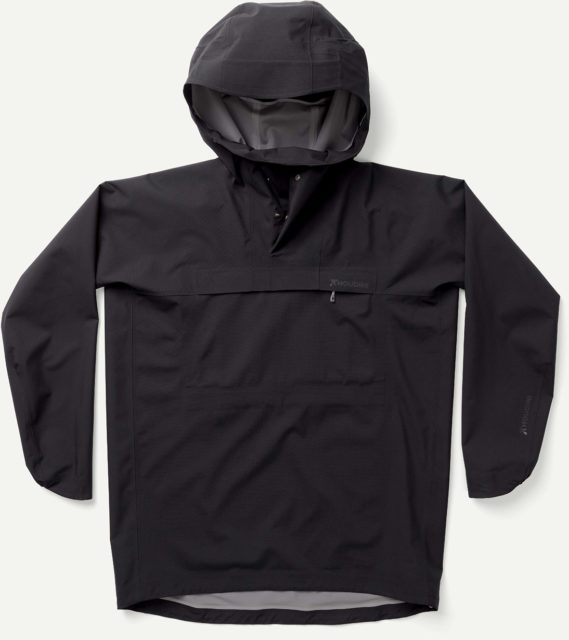
Intro
Ah, anoraks. For some reason, they turned into a controversial topic here at Blister, with staunch defenders on both sides within our reviewer base.
Personally, I love anoraks. I won’t try to tell you that getting rid of a full zipper on the front of a jacket makes it perform better, but I love how they look, many of them still perform really well thanks to technical fabrics & smart designs, and it’s nice to have options, rather than every shell out there looking exactly like the others.
So, as soon as I saw Houdini’s Shelter Anorak at Outdoor Retailer this past year, I was instantly intrigued. Not just because it’s missing a front zipper, but because its silhouette, fabric, and extremely nice, minimal patterning all just looked amazing.
But this is Blister, so I can’t just say it looks nice. I needed to see how well this jacket, which Houdini calls a “wearable multi-tool,” performed — whether that was while bashing inbounds laps at Crested Butte, skinning for turns in the backcountry, or just weathering a storm in town.
After about 20 days in it, I have not been disappointed, but it definitely won’t be for everyone, so let’s dive in:
Quick Background on Houdini
Seeing as this is the first piece from Houdini that we’re reviewing and not everyone is familiar with the brand, I wanted to quickly provide a bit of background info on them (we’re also reviewing their Rollercoaster Jacket & Pants).
Houdini is a Swedish brand that was started by climbing and skiing guide, Lotta Giornofelice, and they aim to create high-performance products with versatile functionality, clean aesthetics, and minimal environmental impact. They currently have a lot of great sustainability practices & initiatives that I encourage you to read about here, and I’ll discuss below the particular ones that apply to the Shelter. You can also read the brand’s whole history here.
Their line spans everything from very technical pieces to super simple, understated, lifestyle-oriented garments. They also make a lot of options that fall between those two categories with a goal of working for both, which is where the Shelter Anorak falls into place.
Fit
I’m 5’8”, 155 lbs and wear a men’s size Medium in just about everything. The Shelter is a unisex piece and I stuck with my standard size Medium, which I’d say fits like most men’s Mediums. The overall volume of the Shelter is pretty average compared to most inbounds-oriented ski shells, and a bit roomier than many lifestyle / urban shells and touring-oriented ski shells. In terms of length, it’s slightly on the longer end, with the size Medium’s subtle drop-hem just about covering my butt.
[Quick Aside on Patterning: At Outdoor Retailer, Sam Shaheen and I were fortunate enough to talk with Houdini’s head designer and I fully nerded out while he discussed how they came up with the pattern for this piece. I won’t get into all the nitty gritty details here cause I want people to, you know, actually keep reading. But basically, they used a draping technique to design the pattern for this piece, rather than the much more common flat-patterning approach. Essentially, when making a pattern via draping, you start with a few pieces of fabric (or, in the case of the Shelter, one single piece) and pin and place it around a body form to get the desired fit, and you then take the fabric off and translate the design to cut pieces of fabric. With flat pattern making, you typically start off with a standard pattern “block” or “sloper” and make changes as needed. To be clear: one of these is not “better” than the other, though flat pattern making is often easier, quicker, and less expensive (and consequently more common). The upside with draping is you get more flexibility when it comes to the pattern and fit since you’re not working off a pre-existing block and you also often end up with more bias-cut sections of fabric, which can be more challenging to work with but also changes the drape of the fabric. While Houdini is certainly not the only brand opting to use a draping technique for some of their patterns, it is fairly rare in the technical apparel world. Ok, end apparel rant.]
In the case of the Shelter, the goal of the draping process was to eliminate as many seams as possible, which is evident when examining the piece, and it also created what I just think is a really good-looking fit that drapes super nicely. Plus, whether due to the draping technique or not, the fit on this piece just feels dialed — I never felt restricted, even when wearing it over fairly bulky midlayers like the Patagonia DAS Light Hoody, yet the Shelter doesn’t look baggy.
The “collar” of the Shelter is pretty high, which I love, though since the fabric is pretty light and super supple, it usually drops down below my chin (particularly when skiing or when it’s windy).
The upside to the Shelter’s wide neck opening is that it’s a bit easier to pull over my head vs. some other anoraks (the collar is also adjustable, which I’ll touch on below). The Shelter is not as easy to get on as half-zip jackets like the Amundsen Peak Anorak, and definitely not as easy as any full-zip jacket, but for an ultra-experienced anorak user like myself, it wasn’t an issue. Jokes aside, the only times I really have an issue with the pullover style is (1) when I forget to put on the Shelter before putting on my helmet, (2) when I’m wearing a back protector underneath (it requires a bit of finagling to get the Shelter’s hem over the top of the back protector), and (3) when I’m in the backcountry and are therefore taking it off / putting it on multiple times throughout the day.
The Shelter will not convert full-zip diehards to the cult of the pullover, but if you get the chance, I’d encourage you to try one as it’s really not that hard (apart from those with limited shoulder mobility).
Features
As Houdini states in their description of the Shelter Anorak, they deliberately designed it with very few features.
This piece has a single, horizontal, zippered pocket on the front with a small zippered pocket for a cell phone within that pocket. This main pocket is great for stashing things like gloves or most skins (though skins for 105mm+ wide, 185cm+ long skis stick out the top). And not that many people will use it for this, but it’s also great for fishing while wearing a waist pack as things inside the front pocket are super easy to access. The internal sleeve fits my iPhone 6 with a bit of room without letting it bounce around a lot while skiing. The pocket is also accessible with all the ski backpacks I’ve worn over the shell, which is a plus.
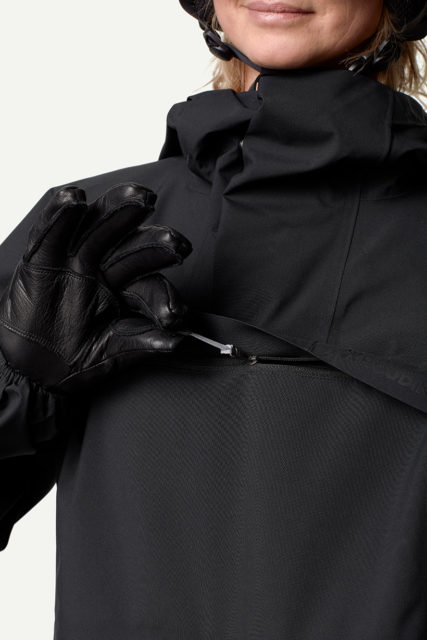
Other than that single pocket, the Shelter has a single drawcord at the back of the helmet-compatible hood, which does a pretty good job of keeping it secure, though I wouldn’t say the Shelter’s hood is class-leading in terms of how secure it feels over a helmet or hood, likely due to the large neck opening. I basically never wear my hoods over my helmets, so it’s not an issue for me, but worth a note.
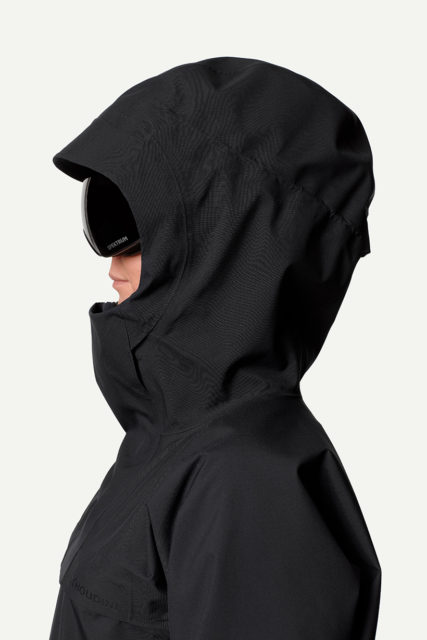
The collar on the Shelter features three snaps that basically let you decrease the volume of the neck opening. It’s super wide with all three snaps undone, but pretty average when you snap all three. I ended up preferring it in most scenarios with the top two snaps undone. But it also looks super cool with all of them undone, in my opinion.
The cuffs on the Shelter are not adjustable but do have an elastic binding around the bottom half, and they’re quite narrow overall. This is one of my few complaints with the Shelter — at least for skiing. I prefer putting my jacket sleeve cuffs over my gloves & mittens, and this was quite difficult with the Shelter. It was certainly doable with all but my bulkiest, gauntlet-style gloves, but as someone who shoots a lot of photos while skiing and is therefore taking gloves on / off all the time, it became fairly annoying. The cuffs were not an issue at all when I wasn’t wearing gloves, or when putting gloves over the jacket cuffs, rather than under.
Weight & Packability
One of the upsides to anoraks, in general, is that their lack of a full zipper and typically minimal feature sets often result in lightweight garments. That’s the case with the Shelter, which came in at a measured weight of 464 grams for the size Medium. That’s very light compared to all but the most minimal waterproof shells out there.
Another upside is packability — for how roomy the fit of the Shelter is, it packs down really small. If you really scrunch it down, it’s about the size of a large grapefruit.
For reference, here’s a list of some of the other shells we’ve reviewed, and their respective measured weights. Note that not all of the pieces are the same size, so try to keep that in mind when making comparisons.
364 g Black Diamond Helio Active Shell, size Medium
366 g Patagonia Ascensionist Jacket, size Medium
435 g Arc’teryx Rush LT Jacket, size Medium
464 g Houdini Shelter Anorak, size Medium
518 g Flylow Cooper Jacket, size Medium
544 g Outdoor Research Hemispheres Jacket, size Medium
563 g Rab Sharp Edge Jacket, size Medium
571 g TREW Capow Jacket, size Medium
574 g Amundsen Peak Anorak, size Medium
590 g Flylow Higgins Coat 2.1, size Large
593 g Patagonia PowSlayer Jacket, size Large
598 g The North Face Freethinker Jacket, size Medium
601 g Spyder Sanction GTX Pro Shell Jacket, size Medium
605 g Patagonia Descensionist Jacket, size Medium
610 g Strafe Cham Jacket, size Large
615 g Patagonia SnowDrifter Jacket, size Medium
626 g Arc’teryx Sabre LT Jacket, size Medium
635 g Mammut Alvier Armor Hardshell Jacket, size Medium
665 g Norrona Tamok Gore-Tex Pro Jacket, size Medium
701 g Eddie Bauer BC Freshline Jacket, size Medium
726 g Holden M-51 Fishtail 3 Layer Jacket, size Medium
825 g The North Face Ceptor Jacket, size Medium
841 g Strafe Pyramid Jacket, size Large
848 g Open Wear Open One 3L Shell Jacket, size Medium
1047 g FW Manifest 3L Jacket, size Large
Materials
The Shelter uses Houdini’s proprietary waterproof / breathable Atmos membrane, which, in the case of the Shelter, is packaged into a 3-layer laminate with 100% polyester fibers used across all three layers: the plain-weave face fabric, the jersey-knit backer, and the membrane itself. The result is what Houdini claims is a fully recyclable fabric, unlike many other waterproof / breathable laminates which often use a variety of different fibers and therefore are very difficult to recycle. Plus, the laminate on the Shelter uses a 70% recycled face fabric and a PFC-free DWR.
While saying a garment can be recycled is nice, it’s really nice when that’s actually feasible for the average consumer. In the case of Houdini, it is. If you absolutely destroy your Shelter Anorak (or several of Houdini’s other Atmos hardshells), you can drop it off at many of their stores / retailers or send it to them and they’ll take care of recycling it. I’d highly encourage trying to repair garments as much as possible, but it’s awesome to know that the fabric of your shell doesn’t need to end up sitting in a landfill once you can no longer use it.
As for the Shelter’s fabric itself, it’s super supple compared to most waterproof shells and feels a bit like a lighter, thinner version of the fabric of the Patagonia SnowDrifter Jacket. Overall, the Shelter’s fabric is one of the most comfortable waterproof fabrics I’ve worn, which is only complemented by the nice fit of the jacket.
Houdini says that the Atmos fabric on the Shelter is rated at (or higher than) 20K/20K for waterproofing / breathability. Those are pretty standard specs for a high-end, waterproof fabric and in the case of the Shelter’s fabric, I actually think they’re pretty accurate (unlike some other fabrics we’ve used). For more on waterproof / breathable fabrics, how they differ, and a whole lot more detail, check out our Outerwear 101 & 201 articles.
Weather Resistance
I’ve used the Shelter (and the Houdini Rollercoaster Pants, which use the same membrane) in some of the wettest snow I’ve ever skied in, as well as some straight-up rain. Through all of that, including soaking, wind-blasted chairlift rides, I’ve never had any water get through the fabric.
The DWR finish on the face fabric eventually gets overwhelmed and the face fabric will wet out (the Shelter’s DWR is neither above- or below-average in this regard), but water has never made its way through the membrane and to my skin. The 20K waterproof rating seems accurate in my experience.
Breathability
The Atmos membrane is not air-permeable and its 20K breathability rating also seems accurate. I.e., this shell breathes fine compared to most waterproof fabrics, but its level of breathability is notably worse than the standout fabrics in this category like eVent DValpine, Polartec NeoShell, Gore-Tex Active, & Strafe’s Recon Elite.
The Shelter also lacks any pit zips for dumping extra heat, though its single pocket is backed with mesh so you can open it up to get a little bit of airflow. That pocket tends to lie quite flat though, even when unzipped, so it doesn’t do a great job of letting air move through the shell.
All that is to so, the Shelter is not the shell I’d pick for wearing while skinning / hiking uphill for extended periods of time. Like most waterproof shells with non-air-permeable fabrics, I can wear the Shelter while doing quick (<30 min) skins or boot packs, but anything longer than that and I’ll toss it in my pack. I do the same for all shells apart from the exceptions noted two paragraphs above, so I wouldn’t consider this to be a big slight against the Shelter in particular, just don’t expect to be blown away by its breathability vs. other high-end, waterproof shells.
Warmth
This is a lightweight, uninsulated shell with a thin fabric. Like all pieces that fall into that category, the Shelter offers almost no inherent insulative value. But it’s also not abnormally warm or cold vs. other uninsulated shells, so I didn’t feel the need to change my layering scheme vs. when using any other uninsulated shells.
Durability
After 20 days in the Shelter Anorak, I have no issues to report. That’s what I’d expect of most shells, so the real test will come down the line. Given the Shelter’s fairly lightweight, thin, supple fabric, I doubt it’ll be amazing when it comes to long-term abrasion, but I think it’ll still be more durable than ultralight shells like the Black Diamond Helio Active Shell & Patagonia Ascensionist. I’m going to be wearing this jacket a lot more in the future, so I’ll update this review if I run into any issues.
Who’s It For?
The Shelter Anorak is … and anorak. And I think that will be the deciding factor for most people. If you’re like our editor-in-chief and hate putting on jackets over your head, the Shelter isn’t going to change your mind. It’s still more difficult to put on and take off vs. any shell with a full-zip closure.
Pullover-preferences aside, the Shelter makes a lot of sense for people who want one shell that can work for both outdoor and urban usage. There’s absolutely nothing wrong with people wearing their techy-looking ski shells around town — I’d actually encourage it since it means buying less stuff. But if you’re like me and don’t love the look of most technical shells, the Shelter is a great option in that it performs well in adverse weather, doesn’t feel restrictive while doing things like skiing, skinning, and hiking, and yet it looks, well, normal. Or actually, it looks better than normal (in my opinion, at least…). Its minimal silhouette and feature set wouldn’t look out of place in New York City, yet its performance characteristics don’t feel out of place on the mountain in Crested Butte. That’s a rare combination.
Other things to keep in mind: the Shelter does not have many pockets, it doesn’t offer much in the way of ventilation, its fabric isn’t extremely burly, it’s not the most breathable hardshell on the market, and its cuffs are tough to get over gloves / mittens. If you’re concerned about the lack of pockets & vents, pullover design, or the cuffs, I’d highly encourage you to check out the Houdini Rollercoaster Jacket, which uses a very similar fabric vs. the Shelter but is full-zip and has more features.
But for those who are looking for a waterproof shell that’s comfy and that doesn’t look like every other shell out there, the Shelter warrants strong consideration if you’re open to / appreciate the anorak design.
Bottom Line
In a time where many shells look and perform very similarly, trying the Houdini Shelter Anorak was a refreshing experience. It offers the weather protection and much of the breathability you’d expect of a high-end shell, but packages that into a very minimal, comfortable, and stylish design. Many people will write it off due to its pullover design — and I have zero problem with that decision — but for the other anorak fans out there, the Shelter should be on your list.

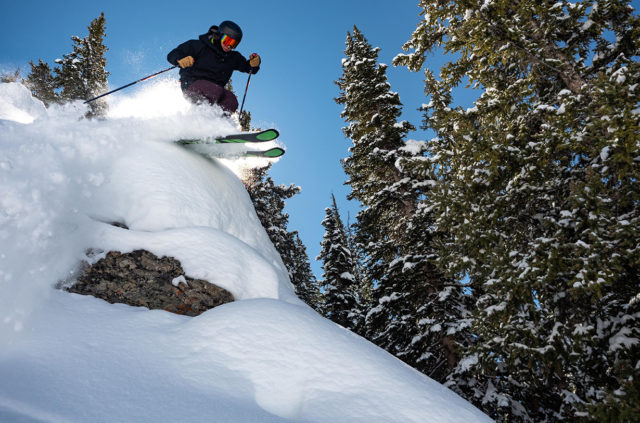
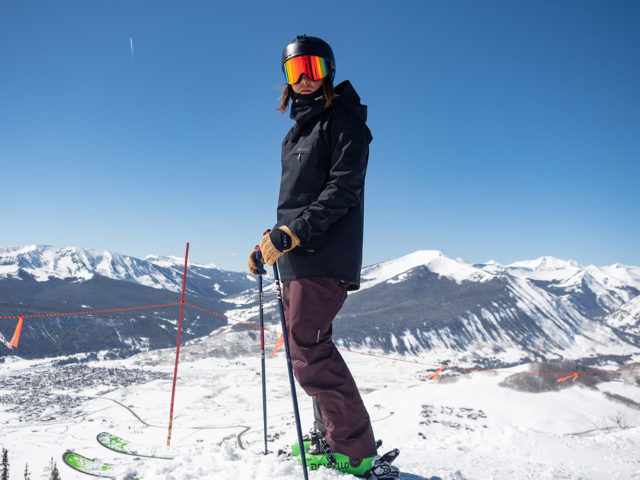
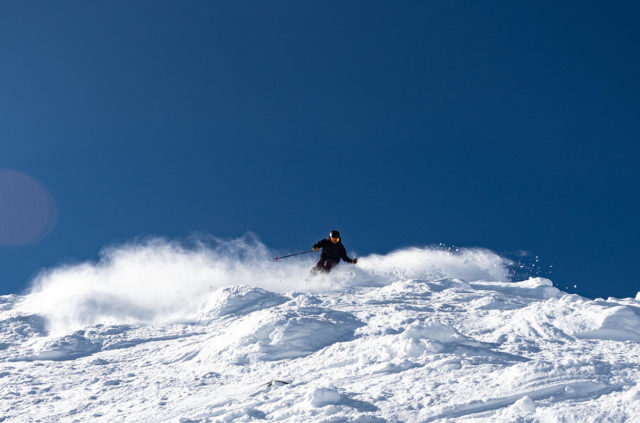
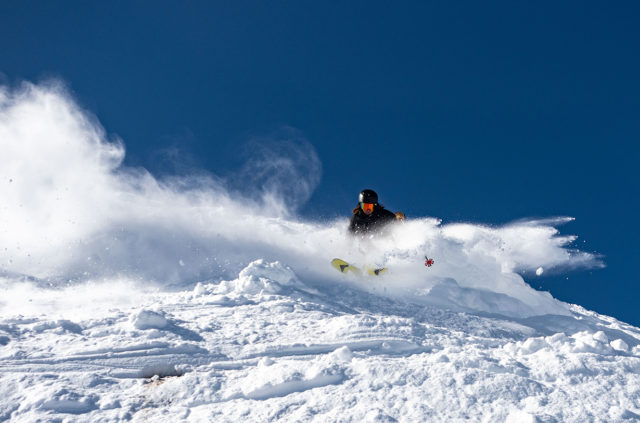
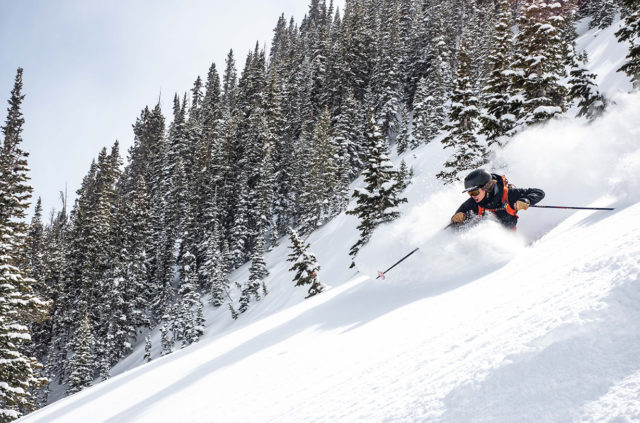
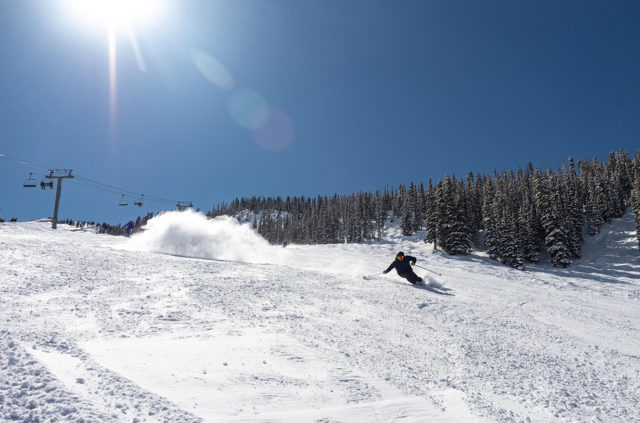
As a certified “heavy sweater”, the idea of having neither front zip nor vents in an air-impermeable shell terrifies me. I actually don’t have any particular aversion to anoraks, but this would not be the one for me.
Too much information
Nice looking jacket
Any thoughts on the likely durability of the fabric? I have a very light Montane jacket made of eVent and the lining started to peel away after 6 months use whilst wearing a rucksack – I wouldn’t spend $500 on a jacket unless the material & lining seems tough enough
In terms of the laminate integrity, it’s tough to say as this is the first year that we’ve used Houdini’s Atmos laminate. That said, we’ve put roughly around 20 days in each of the three pieces (Shelter, Rollercoaster Jacket, & Rollercoaster Pants) and haven’t had any durability issues so far. I don’t see any reason on our end to think that the fabric would delaminate, though if it did, that would fall under Houdini’s lifetime warranty and they say they will repair or replace any of their garments that deteriorate / fail prematurely.
The price of shell garments has really gotten ridiculous. Technology is not changing that fast to justify the silly prices we are seeing. I would love for you guys to do a podcast with one or three from the industry and I would like to hear them justify the astronomical pricing. Please do this podcast.
Thanks for the answer!!
You guys going to be posting the RollerCoaster review anytime soon? Hoping to take advantage of the late season sales. Thanks for all the great content!
I don’t think it’s going up very soon but have you checked out our buyer’s guide? We talk about the Rollercoaster kit in the apparel section of the guide: https://blisterreview.com/winter-buyers-guide
Awesome will check that out. Thanks for responding!
As for ventilation, one thing I love about an anorak like this (not having tried the Shelter), with a wide open bottom and a collar that can be opened up wide, is how it works like a chimney. Hot air will rise out of the collar and cooler air will be sucked in from below.
I actually love the depth you went into here, Luke. The thing about patterning was very interesting.
My favorite thing about anoraks, btw, is the extra bit of comfort that comes from not having to have that stiff zipper folding up across your belly when you are crunched.